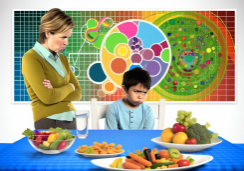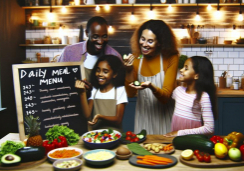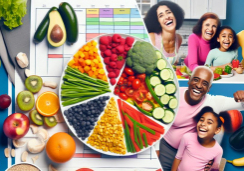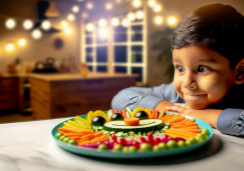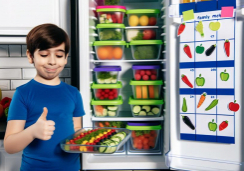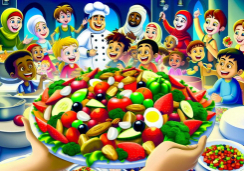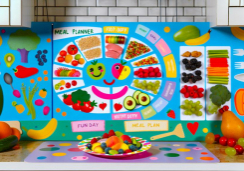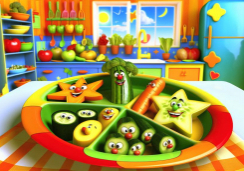7-Day Gluten-Free Home Cooking Meal Planner
Nearly one in a hundred people worldwide are affected by celiac disease, necessitating a gluten-free diet, but you don't have to have celiac to understand the benefits of cutting out gluten.
As you consider embracing this lifestyle shift, you're likely wondering how to navigate your meals without feeling restricted or overwhelmed. That's where a 7-Day Gluten-Free Home Cooking Meal Planner comes in, offering a structured yet flexible approach to your weekly dining.
It's not just about removing gluten; it's about discovering a variety of meals that are as nourishing as they are delicious. As you ponder whether this change is feasible for your busy schedule, consider the peace of mind that comes with having a well-thought-out plan, complete with a shopping list and prep tips.
The question remains: Can a gluten-free diet be as satisfying and diverse as its gluten-filled counterpart? Let's explore the possibilities together.
Gluten-Free Pantry Essentials
To successfully embark on a gluten-free home cooking journey, it's crucial to stock your pantry with essentials such as almond flour, coconut flour, and a reliable gluten-free all-purpose blend for a variety of baking and cooking needs. These flours are foundational to crafting gluten-free meals that are both nutritious and satisfying.
For your gluten-free meal plan, keep versatile grains like quinoa, rice, and gluten-free oats at hand, as they provide excellent bases for a myriad of dishes, from breakfast porridge to hearty dinner bowls.
Moreover, gluten-free pasta, noodles, and rice are indispensable for quick, easy meal bases, allowing you to whip up gluten-free versions of your favorite comfort foods. Be vigilant about hidden sources of gluten when selecting sauces, condiments, and broths; opt for certified gluten-free labels to ensure your Gluten-Free Diet remains uncontaminated.
Day-by-Day Meal Breakdown
Planning your meals day by day, you'll discover a diverse array of nutrient-dense foods designed to nourish and satisfy two adults, with each dinner recipe yielding enough for a savory encore the following day. The day-by-day meal breakdown ensures that breakfast recipes are simple and repeatable throughout the week, making your morning routine smooth and stress-free. For dinner, you'll delve into easy gluten-free recipes that offer a balance of protein, vegetables, and whole grains, creating a foundation for a healthy diet.
Your meal prep is crucial, setting the stage for a week of wholesome eating. Dedicate time to prepare components that can be quickly assembled into meals, ensuring that even on your busiest days, you have access to nutritious options. Leftovers the next day provide not just convenience but also a mindful approach to reducing food waste.
Snacks and desserts, included as part of your plan, can be enjoyed whenever you need an extra energy boost or a sweet treat. By following the day-by-day meal breakdown, you'll find that eating gluten-free isn't only manageable but also enjoyable, with a variety that keeps your taste buds interested and your body well-fueled throughout the week.
Simplifying Snacks and Desserts
As you embrace a gluten-free lifestyle with your well-structured meal plan, don't forget the importance of including a variety of snacks and desserts that align with your dietary needs. Ensuring that these small bites aren't only satisfying but also nutritious is key to maintaining your health and energy throughout the day.
Consider these easy, gluten-free options for your meal planner:
- Quick Snacks:
- *Nuts and Seeds*: A handful of almonds or pumpkin seeds provides a good mix of protein, healthy fats, and fiber.
- *Dried Fruits*: Dates or apricots are naturally sweet and high in fiber; perfect for a quick energy boost.
- *Peanut Butter*: Spread on a gluten-free rice cake for a satisfying, protein-rich snack.
- Fruit-Based Desserts:
- *Mixed Berry Parfaits*: Layer yogurt with fresh berries and a pinch of salt for a refreshing dessert.
- *Fruit Salad*: Toss together your favorite seasonal fruits for a simple, hydrating treat.
- Make-Ahead Treats:
- *Gluten-Free Energy Balls*: Combine oats, peanut butter, and a pinch of salt, then roll into balls for a portable snack.
- *No-Bake Granola Bars*: Mix nuts, seeds, and dried fruits, bind with honey or maple syrup, and chill for an easy, Loaded Baked snack bar.
These recipes aren't only delicious but also contribute to a balanced, day-to-day gluten-free diet.
Gluten-Free Cooking Tips
Stocking your kitchen with gluten-free staples is the cornerstone of effortless and nutritious meal prep. When you're adhering to a gluten-free diet, it's paramount to keep your pantry filled with ingredients that meet your dietary needs. This approach not only simplifies decision-making but also ensures your meal plans are easy to make and remain varied.
To optimize your gluten-free cooking, take the time to organize your kitchen. Create a detailed grocery list before you shop, focusing on whole foods and gluten-free grains like quinoa and rice. Including recipes for breakfast that can be prepped the night before, such as chia puddings or overnight oats with gluten-free oats, can save you valuable time in the mornings.
Embrace the Mediterranean Diet Meal approach, utilizing fresh vegetables, lean proteins, and healthy fats, all naturally gluten-free and nourishing. Look for frozen options at your local Whole Foods Market that align with this diet for quick and balanced meals.
Lastly, gluten-free cooking tips often recommend batch cooking and pre-chopping ingredients to streamline your cooking process. By prepping ahead, you can assemble meals swiftly, reducing kitchen fatigue and leaving time for relaxation. Remember, gluten-free eating doesn't have to be complex; with the right plan, it's both achievable and delicious.
Can I Use the 7-Day Meal Planner for the New Gluten-Free Meal Plan?
Certainly! When adopting a gluten-free lifestyle, the transition to the kitchen can be seamless with a 7-Day Meal Planner that’s designed for a glutenfree home cooking plan. It provides a structured yet flexible approach to ensure daily meals are both satisfying and safe from gluten.
Weekly Shopping List Guide
Having organized your kitchen with gluten-free essentials, let's now focus on creating a weekly shopping list that will keep your meal planning on track and nutritionally balanced. Here's how to make your grocery shopping efficient and ensure you don't miss a thing for your Day Meal plans, including that all-important breakfast and the Vegetarian Meal options.
- Pantry Staples:
- Whole grains like quinoa, buckwheat, and certified gluten-free oats
- Nuts, seeds, and legumes for a protein boost
- Gluten-free spices, condiments, and baking ingredients
- Fresh Produce:
- Seasonal vegetables and fruits for variety and nutrition
- Leafy greens for salads and smoothies
- Herbs for flavor and garnishing
- Dietary Considerations:
- Dairy or dairy-free alternatives based on personal needs
- Meat, fish, or plant-based proteins catering to dietary restrictions
- Gluten-free snacks for healthy munching throughout the week
Before you head out, take stock of what you already have to avoid duplicates. Bulk buying makes it easy on the wallet and reduces trips to the store. And if you're pressed for time, consider online grocery services—they're a game-changer for keeping your gluten-free kitchen well-stocked.
Frequently Asked Questions
What Can You Eat on a Gluten-Free Day Diet?
You can enjoy gluten-free breakfasts, mindfully select snack options, and make ingredient substitutions to prevent cross-contamination concerns. Eating out requires label reading and seeking nutritional balance in your choices.
What Can I Eat for Dinner That Is Gluten-Free?
For a gluten-free dinner, you can enjoy zucchini noodles, stuffed peppers, or a hearty quinoa salad. Baked tilapia, cauliflower steak, eggplant parmesan, and chicken stir-fry are also nutritious, balanced options.
Why Am I Losing Weight on Gluten-Free Diet?
You're likely losing weight on a gluten-free diet due to unintentional calorie cuts, improved nutrient absorption, and inflammation reduction, despite the risks of hidden gluten sources and cross-contamination. Always check labels for gluten-free grocery tips.
What Not to Eat When Avoiding Gluten?
You'll want to avoid gluten-containing grains, beware of hidden gluten sources, and be vigilant about cross contamination risks. Look for gluten-free labeling and research the oats controversy if you have gluten sensitivity.
Conclusion
You've now got the tools to thrive on a gluten-free diet! Stick to your shopping list, prep ahead, and enjoy a variety of nutrient-packed meals.
Remember, a well-stocked pantry is key. Keep experimenting with flavors, and don't hesitate to tweak recipes to your taste.
Your body will thank you for the wholesome choices you're making. Embrace this change, and watch your health transform.
Happy cooking!

